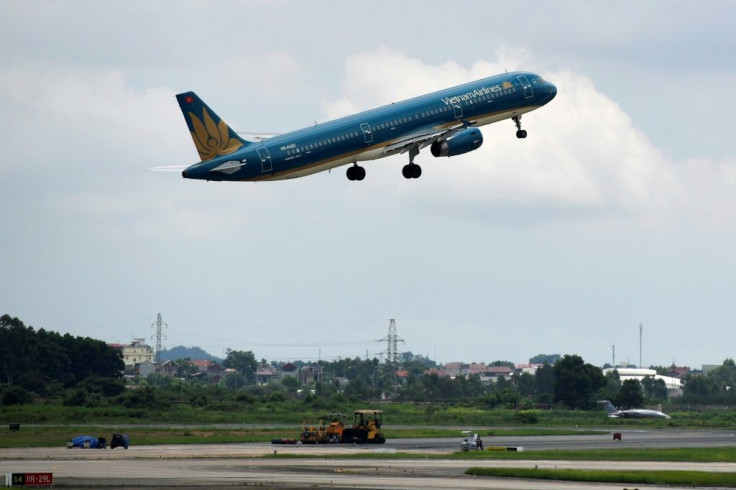Vietnam’s Burgeoning Middle Class Loves The Friendly Skies As Aviation Industry Expands

Vietnam’s aviation industry is booming, boosted by foreign business travelers and a burgeoning middle class eager to travel.
By 2020, the Civil Aviation Administration of Vietnam said it expects to have 23 airports with annual traffic of 144 million passengers by 2020 and 28 airports with an annual traffic of 308 million passengers by 2030.
In 2017 Vietnam airlines carried some 94 million passengers, including 13 million foreigners. This figure is expected to reach 131 million by 2020 and 280 million by 2030.
Under these demand estimates, Vietnam will need at least 10 airlines to meet the growing demand, up from six operating today.
Vietnam is projected to become the fifth fastest-growing aviation market in the world by 2035, said the International Air Transport Association.
The country's Ministry of Transport plans to spend about $15.4 billion to develop the aviation sector by 2030.
“It’s the combination of the business travel and the tourism together which are really making Vietnam so attractive for the aviation industry to grow,” said Rajiv Biswas, Asia-Pacific chief economist at market research firm IHS Markit.
For now, airlines in Vietnam are adding new routes to help meet growing demand. The largest airline, Vietnam Airlines recently added two new routes to Shenzhen in southern China.
“These new routes will not only connect Hanoi and Ho Chi Minh City to one of the most vibrant economic and technology hubs in China but also enable travelers to explore attractive domestic destinations in both Vietnam and China,” the airline said.
Vietnam Airlines will also launch a new daily service from Hanoi and Macau, special administrative regions of China, starting Dec. 15.
The airline now boasts 17 routes to China.
Growing demand has spurred airlines to purchase more aircraft – Vietnam Airlines wants to buy 50 Airbus A3210/321 or Boeing 737 MAX 8/9/10 aircraft over 2021-2025 for $3.83 billion. Bamboo Airways recently signed an agreement to buy 50 aircraft from Airbus, while Vietjet signed a $140 million loan with foreign banks to fund its purchase of 20 aircraft from Airbus.
Vietnam’s growing aviation industry and its booming economy also benefit from the simple luck of its location.
“The geographic location is important,” said Shoeib Choudhury, country manager and general director, DHL Express Vietnam. “It’s highly connected to China on the northern side, which makes the supply of raw materials quite easy for manufacturing, and through the North China Sea and Pacific it’s also connected to North America.”
Vietnam has undergone tremendous economic transformation in recent years. The World Bank said between 2002 and 2018, more than 45 million Vietnamese were lifted out of poverty. During that period, the poverty rate plunged from more than 70% to less than 6% while gross domestic product per capita increased by 2.5 time, to more than $2,500 in 2018.
Vietnam’s prosperity has created a new middle class that demands high quality goods and services.
The World Bank predicted the percentage of Vietnamese people who are middle class will surge to 26% by 2026 from 13% currently.
© Copyright IBTimes 2025. All rights reserved.





















